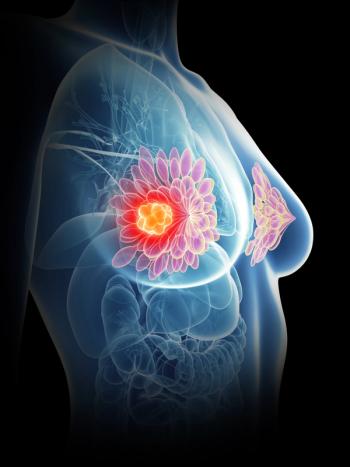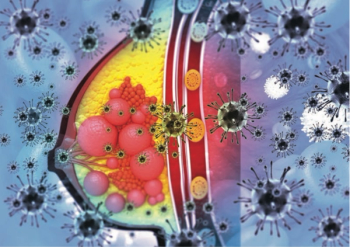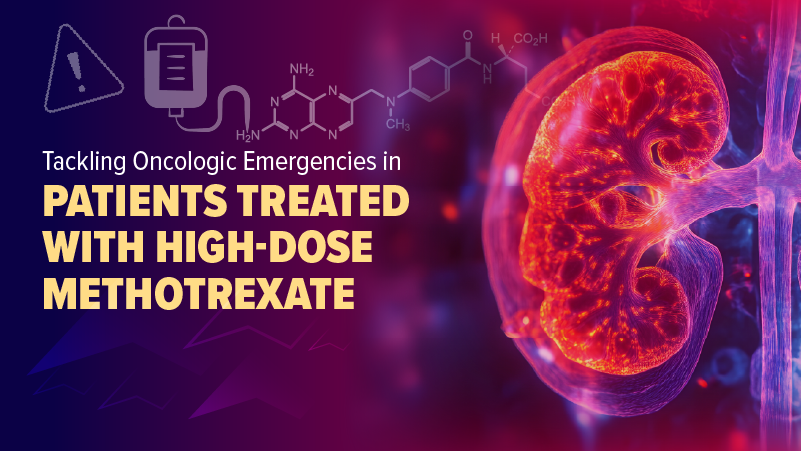
Efficacy of Naporafenib in NRAS-Mutant Unresectable/Metastatic Melanoma Presented at 2022 ESMO
Results of a phase 2 trial show favorable efficacy and tolerable safety of naporafenib in combination with rineterkib, trametinib, or ribociclib in previously treated, unresectable or metastatic melanoma.
Data from a phase 2 trial (NCT04417621) presented at the
In a pooled analysis, the combinations displayed promising efficacy among 85 patients with NRAS-mutant disease with a confirmed partial response (cPR) rate of all the combinations was 21% with 40% of patients achieving stable disease (SD). Additionally, the disease control rate (DCR) was 61% (95% CI, 49%-71%). Disease progression (PD) was reported in 28% of patients in this cohort. The disease control rate (DCR) was 61% (95% CI, 49%-71%).
“Naporafenib is an orally bioavailable small molecule,” Céleste Lebbé, MD, PhD, professor of dermato-oncology and CIC, Universite Paris Cite, AP-HP, Hopital Saint-Louis, in France, said during a presentation of the findings. “It is a type II pan-RAF inhibitor, which is selective for both BRAF wild-type and V600 and CRAF. Thereby it inhibits that kinase signalization without the risk of paradoxical activation in normal cells.”
The trial enrolled patients with unresectable/metastatic BRAF V600–mutant or NRAS-mutant melanoma. Patients with BRAF V600–mutant disease needed to have received a maximum of 2 prior lines of immunotherapy and 1 prior line of targeted therapy with a RAF inhibitor, either as a monotherapy or in combination with a MEK inhibitor to be eligible for the study. A maximum of 2 prior lines of immunotherapy in the metastatic setting were required for patients in the NRAS-mutant arm.
Patients were randomly assigned to receive oral naporafenib 400 mg twice daily in combination with either rineterkib, trametinib, or ribociclib. Rineterkib was administered at a dose of 200 mg daily and trametinib dosing was 0.5 mg daily. Ribociclib was given at a dose of 400 mg daily for 3 weeks on, 1 week off.
During the course of the trial, the naporafenib plus trametinib regimen was adjusted to naporafenib 200 mg twice daily and trametinib 1 mg daily based on phase 1 dose-expansion data.
The primary end point was overall response rate. Secondary end points included safety, tolerability, duration of response, progression-free survival, and DCR.
The overall study population (n = 134) had a median age of 60 years (range, 20-86) and most patients were males (62%). A majority of patients had an ECOG performance status of 0 (63%). Patients underwent 1, 2, or at least 3 prior regimens at a rate of 23%, 50%, and 27%, respectively.
In the BRAF V600–mutant arm (n = 48), the median age was 54 years (range, 20-81) and 56% of patients were males. Most patients had an ECOG performance status of 0 (60%) and received 3 or more prior treatment regimens (52%).
Comparatively, in the NRAS-mutant arm (n = 86), the median age was 64 years (range, 38-86) and most patients were again males (65%). Patients primarily had an ECOG performance status of 0 (65%) and 2 was the most common number of prior lines of therapy (55%).
Additional data from the trial showed that no patients with BRAF V600–mutant disease experienced a cPR; however, 13% of patients had SD. The DCR was 13% (95% CI, 5%-25%). Most patients (63%) in this group experienced PD.
Patients with BRAF V600–mutant disease treated with the rineterkib-containing combination (n = 29) had a DCR of 7% (95% CI, 1%-23%). Most patients progressed (62%) and 2 patients experienced SD.
Among patients with BRAF V600–mutant disease who received the trametinib-containing combination at a dose of 0.5 mg (n = 6) the DCR was 0% (95% CI, 0%-46%) and all patients progressed. In the 6-patient 1-mg trametinib group, the DCR was 33% (95% CI, 4%-78%) with 2 patients achieving SD and 3 progressing.
Finally, in the rineterkib group (n = 7) the DCR was 29% (95% CI, 4%-71%). Two patients had PD and 3 experienced SD. Patients underwent treatment for a median of 1.8 months (range, 0.0-8.3), 1.8 months (range, 1.0-3.6), 1.9 months (range, 0.4-6.6), and 1.3 months (range, 0.2-6.2) in the rineterkib, trametinib 0.5 mg, trametinib 1 mg, and ribociclib groups, respectively.
In the NRAS-mutant population patients treated with rineterkib (n = 29), trametinib 0.5 mg (n = 17), trametinib 1 mg (n = 24), and ribociclib (n = 15) achieved a DCR of 62% (95% CI, 42%-79%), 71% (95% CI, 44%-90%), 71% (95% CI, 49%-87%), and 33% (95% CI, 12%-62%), respectively. Patients experienced a cPR at a rate of 21%, 29%, 25%, and 7%, respectively.
Patients experienced PD at a rate of 31%, 24%, 17%, and 40%, respectively, and SD occurred in 41%, 41%, 46%, and 27% of patients. The median duration of treatment exposure was 2.9 months (range, 1.0-13.9), 4.0 months (range, 1.0-13.2), 3.4 months (range, 0.5-6.8), and 1.8 months (range, 0.3-14.2), respectively.
In terms of safety, adverse effects (AEs) of any grade were reported in 96% of the total study population. The most common AEs of any grade were skin toxicities such as rash (35%), dermatitis acneiform (28%), and rash maculopapular (10%). These skin toxicities were mostly grade 1 or 2. Prophylactic skin care was not mandated early on in the trial but has now been introduced, Lebbe noted.
Most patients (89%) in the overall population had discontinued treatment as of July 4, 2022. Disease progression was cited in more than half (54%) as a reason for discontinuation and 17% discontinued because of AEs (17%). Treatment was ongoing in 11% of patients at the data cutoff.
Regarding pharmacokinetics, investigators wrote the profile of naporafenib plus with rineterkib, trametinib, or ribociclib was characterized by relatively fast absorption. The median Tmax ranged from 2.96 hours to 3.85 hours on day 15 following after twice daily dosing. Additionally, single agent naporafenib and naporafenib plus any of the other agents had similar Cmax and area under the curve ranges, indicating that no drug/drug interactions occurred.
“We can reasonably conclude that these results deserve further investigation of naporafenib combinations, particularly with ribociclib or trametinib in immuno-resistant, NRAS-mutated melanoma,” Lebbe said.
Reference
Lebbe C, Long GV, Hamid O, et al. Phase II study of multiple LXH254 drug combinations in patients (pts) with unresectable/metastatic, BRAF V600- or NRAS-mutant melanoma. Presented at: ESMO Congress 2022; September 9-13, 2022; Paris, France. Abstract LBA40
Newsletter
Stay up to date on recent advances in the multidisciplinary approach to cancer.

















































































